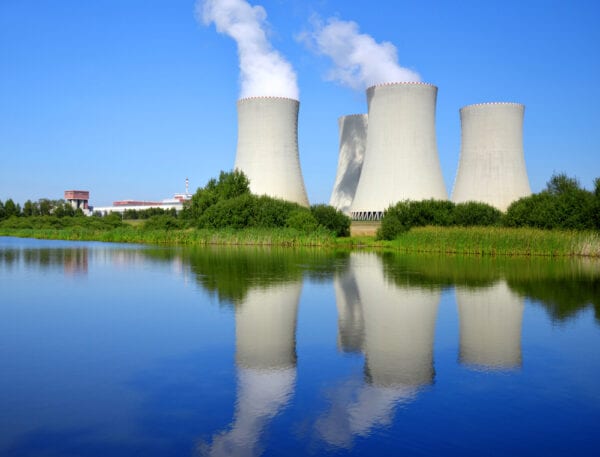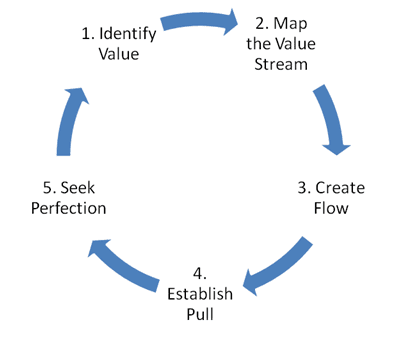
The power and energy industry is essential to our everyday lives. Without their services, we can’t cook or keep our food cold, regulate our home’s temperature, or use electronics. We are highly dependent on electricity and natural gas, whether this electricity is generated through nuclear, coal, renewable, or wind power. We require it for even the simplest tasks.
Maintenance management in the power and energy industry should be taken very seriously to minimize the chance of power outages and maximize electrical output. To keep assets productive, power plants need a strong, robust maintenance management plan to meet their unique challenges. Learn more about what this industry does, what maintenance challenges they face, and how computerized maintenance management system (CMMS) software helps power plants address them.
Power Plant Maintenance
Power plant maintenance is complex and requires dynamic processes and regular preventive maintenance tasks to ensure production runs smoothly while people stay safe. There is often a power plant maintenance engineer or maintenance manager who supervises all maintenance work to ensure it is completed to company and industry standards. If a problem on site does not get addressed quickly, it can turn into an emergency. Power plant maintenance includes corrective and preventive maintenance for equipment such as gas powered turbine generators and boilers, among other assets that use compressed air to generate electricity.
Maintenance teams also optimize plant operating capability by maximizing availability of power generation assets Plant Load Factor (or PLF) is also an important focus for power and energy industry maintenance because it measures a plant’s capacity utilization.
Wind Turbine Maintenance
Wind turbine-generated energy, a form of clean energy, is a great alternative to traditional fuel types. The U.S. is a leader in the clean and renewable energy industry. Despite the desire to convert even more energy to wind-power, the high cost of manufacturing and maintaining a wind turbine slows progress in this area. Estimated costs for maintaining a wind turbine range from $42,000-48,000 per megawatt (MW). Keeping the wind turbines in optimal condition mitigates these costs.
To ensure wind turbines remain fully operational at all times, maintenance workers must continually lubricate parts such as gearboxes and bearings. They must frequently check the connection between the turbine blades and other systems. There are sensors on most units that use predictive maintenance to send signals to connected maintenance systems when maintenance is required. Technicians work at a height of 300 feet or higher; therefore jobsite safety is a number one priority and concern.
Overall, the power and energy industry strives to make their maintenance processes as efficient and productive as they can, through total productive maintenance (TPM) when possible.
Read More: What is Total Productive Maintenance?
Power and Energy Maintenance Management Challenges
The power and energy industry experiences maintenance management challenges in both power plants and wind turbine farms.
Producing Safe Energy at All Times
Nuclear, coal, hydropower, and steam-fueled power generation facilities require vigilant procedures to operate. They must stay online and constantly produce efficient, safe energy. Diligent maintenance management is required to do so, while also considering public safety, the environment, and the protection of workers in the plant.
Equipment Needs Frequent Monitoring
Maintaining equipment, especially on wind farms, is challenging compared to nuclear power. It requires continuous or frequent monitoring of the health of machinery, and performing maintenance work accordingly. Those working in this industry have adapted best practices used in other industries such as industrial manufacturing and mining and natural resources. The goal is to schedule required preventive maintenance activities for technicians that specialize in wind energy at the appropriate intervals.
Continuous Inspections
Because assets in the power and energy industry must be running at all times, continuous inspections for power plant and wind turbine equipment need to be completed. These inspections make certain that parts are lubricated and systems are connected. They also ensure any necessary repairs are found and made before they become emergencies, if at all possible.
Safety and Regulatory Compliance
Another challenge in power plant maintenance is adhering to regulatory compliance standards, including those set by Occupational Safety and Health Administration (OSHA), Environmental Protection Agency (EPA), and Federal Energy Regulatory Commission (FERC). It is challenging because technology in this industry is rapidly evolving. What’s up to date now may no longer be so in six months to a year. Regular examination of new requirements and continuous education in this area is imperative.
How a CMMS Helps Address Power and Energy Industry Challenges
Control, Monitor, and Predict Process
Ensuring that power plant maintenance is done well requires a three step method. The first is to control, which means to keep track of inspections and ensure compliance to all regulations and standards. Next is to monitor data so you can stay abreast of how your equipment is operating. The third step is to predict future maintenance jobs by implementing a preventive maintenance plan, which will increase asset reliability and lessen downtime. Assets that are in good condition or “healthy” reduce the overall waste created during production. CMMS helps make this process possible by keeping a record of past inspections, providing easily accessible data for regular monitoring, and enabling advanced scheduling and prioritization of preventive maintenance work.
SCADA System Integration
A CMMS system can help address challenges faced by the power and energy industry. A CMMS system makes it easier for maintenance teams to meet the high demands of its customers, which include homeowners, tenants, businesses, and municipalities. One way a CMMS does this is by integrating with SCADA systems which detect abnormal conditions, faults, and alarms in real time.
When the power and energy CMMS system works together with a SCADA system, the CMMS can automatically create a work order. Based on this information, it can send it to the correct person to do the job. This industry is all about increased asset availability, which can be improved by using a CMMS to perform more preventive maintenance. CMMS software manages asset data and uses API technology to share maintenance data between business systems.
Corrective to Preventive Maintenance Shift
Power and energy industry CMMS software can shift the paradigm from corrective to preventive and predictive maintenance, which is a goal of many power and energy organizations. Studies completed by the Electric Power Research Institute (EPRI) determined that it costs $17-18 per horsepower every year to perform corrective maintenance on machinery after it breaks down. The cost of preventive or predictive maintenance for a power plant’s machinery is between $7 and $13 per horsepower, which adds up to substantially lower costs over time.
Better Organization and Accountability
CMMS software, as energy asset management software, allows energy organizations to better organize their equipment and facilities. At the same time, CMMS software can increase accountability of maintenance managers and technicians. Using a CMMS makes it easier to standardize procedures for efficiency, track warranties, and improve planned maintenance turn-around times.
Power Plant Commissioning
This asset management software is also useful after the commissioning of power plants. During commissioning, machinery and other components are tested to see if they perform as a system in the way they are designed. Once the power plant has completed this process, a CMMS offers the functionality to support an enterprise while remaining easy to use. Some unplanned maintenance and repairs are inevitable. However, viewing data in computerized maintenance management software allows you to complete most corrective tasks before they become emergencies.
FTMaintenance is CMMS Software for Power and Energy
To reduce failure and lost productivity in today’s fast-paced energy production environments, CMMS software is essential. If you need a tool for more effective energy maintenance management, look no further than FTMaintenance. This CMMS system is packed with advanced features for not only asset tracking, but job scheduling, labor costs, and inventory tracking as well. It also helps maintenance teams keep detailed records of their equipment and assets. Power plant maintenance, along with maintenance for other types of energy organizations, should largely be focused on preventive maintenance. The FTMaintenance preventive work order process will facilitate the scheduling of maintenance jobs.
FTMaintenance CMMS software is important for the power and energy industry, as well as organizations in any industry. Request a demo today to learn more about how FTMaintenance can work for you.
Read more about FTMaintenance Select benefits for power and energy industries







Recent Comments